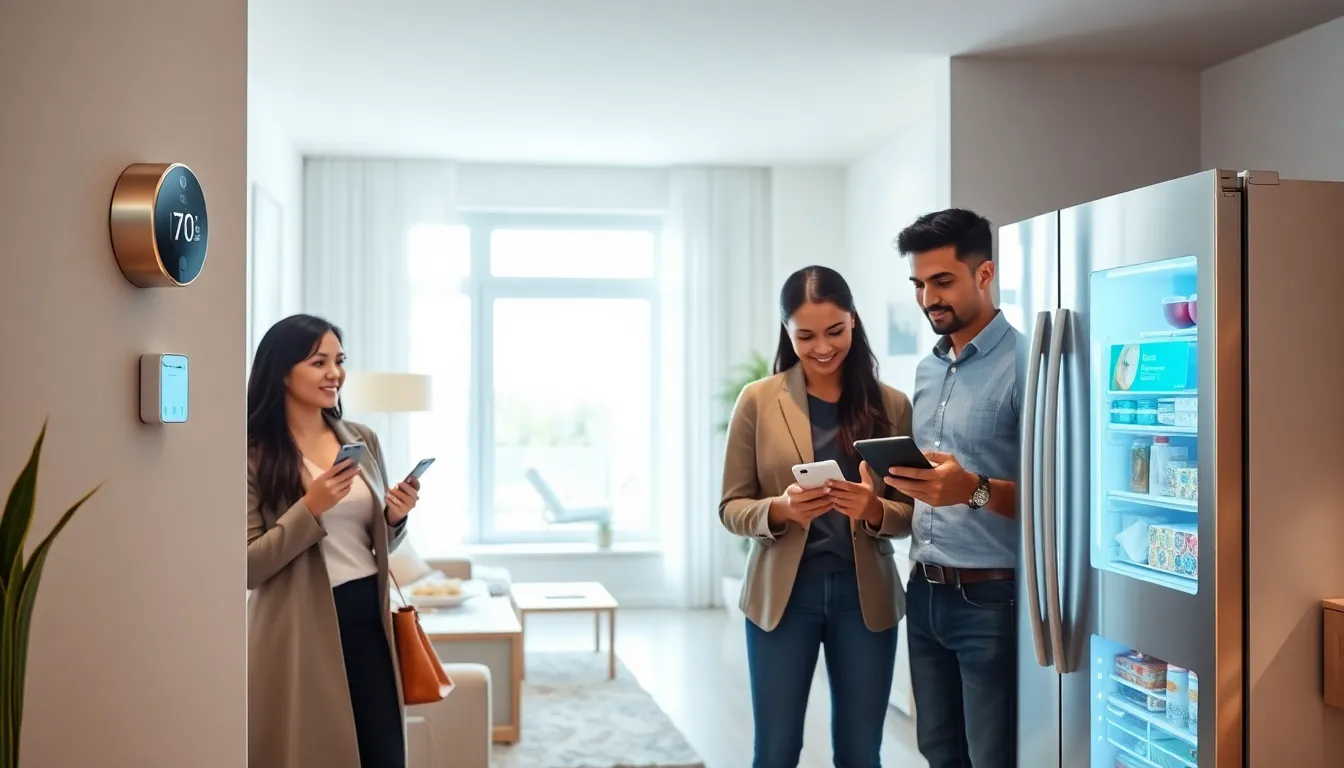Table of Contents
ToggleImagine stepping into your house and it feels more like a scene from a sci-fi movie than your usual abode. Smart home improvements do just that, turning your living space into a tech-savvy sanctuary. If you’ve ever dreamed of asking your house to dim the lights or turn up the heat on a chilly evening with just your voice, you’re not alone. This article is here to guide you on how to transform your home into a smart wonderland, all while keeping it funny, and let’s face it, who doesn’t want their couch to react to their presence?
Understanding Smart Home Technology

Smart home technology refers to the various devices and systems that link your household gadgets through the internet, allowing them to be controlled remotely or automate routines. This includes everything from smart thermostats to automated lighting systems, creating an interconnected ecosystem within your home.
Essentially, this technology works on the “Internet of Things” (IoT) principle, where everyday objects are equipped with internet connectivity, enabling them to send and receive data. Imagine having a refrigerator that can tell you when you’re running low on milk or a coffee maker brewing your morning cup before you even step out of bed. It’s not just about convenience: it’s about reining in control over your living space with just a few taps on your smartphone or even simple voice commands.
Benefits of Smart Home Improvements
The benefits of smart home improvements stretch far and wide, appealing to various needs and desires. Firstly, they enhance convenience: who wouldn’t love adjusting the temperature from their couch or locking the door with a quick voice command?
Also, smart home features boost security. Many homeowners invest in smart surveillance systems that allow them to monitor their property in real-time, keeping unwanted guests at bay. Security alerts can even be sent straight to your phone, letting you know the moment something seems amiss.
Also, energy efficiency reaps significant rewards. With smart thermostats and energy monitoring devices, you can optimize heating and cooling, preventing unnecessary electricity waste. Not only does this lower utility bills, but it also contributes to environmental sustainability, a win-win.
Finally, these nifty technology upgrades can increase your home’s resale value. Homebuyers today often seek properties with existing smart features, making your property more appealing.
Popular Smart Home Devices
Several key players dominate the smart home device market, and knowing these can help make the selection process smoother.
- Smart Speakers: Devices like the Amazon Echo and Google Nest provide voice control for various smart home features, making them the brains of the operation.
- Smart Thermostats: The Nest and Ecobee offer temperature control that learns your habits, optimizing energy use without compromising comfort.
- Smart Security Cameras: Brands like Ring and Arlo allow homeowners to keep an eye on their property from anywhere, providing real-time alerts and recordings.
- Smart Bulbs: Options from Philips Hue and LIFX invite you to control your lighting through your smartphone, with the ability to change colors and create schedules.
These devices not only blend convenience into the living experience but also adapt to individual lifestyles, making it easier to embrace the smart home revolution.
Steps to Implement Smart Home Improvements
Implementing smart home improvements doesn’t have to feel like building a spaceship. It can be a straightforward process when you break it down:
Enhancing Security with Smart Home Features
Start with security. Invest in smart locks and cameras. These devices can easily integrate with your existing home network and provide you with peace of mind. Schedule the cameras to send you alerts or to turn on automatically at night.
Improving Energy Efficiency
Next, focus on energy efficiency. Install smart thermostats and energy-efficient bulbs. These devices automatically adjust based on whether you’re at home or not, learning your habits to save energy effectively.
Creating a Smart Home Network
Finally, creating a smart home network is crucial. A strong Wi-Fi connection is the backbone of smart home technology. Consider a mesh Wi-Fi system for extensive coverage, ensuring every device connects seamlessly without dead spots.
By following these steps, transforming your home into a smart haven becomes less of a chore and more of an achievement.
Future Trends in Smart Home Technology
The landscape of smart home technology is ever-evolving. Cutting-edge advancements are emerging on the horizon. One major trend is the rise of artificial intelligence in smart home devices, enabling them to learn more about user preferences and suggest optimizations automatically.
Also, smart homes are becoming more integrated with health technology. Imagine scales that monitor your weight and send notifications to your fitness apps or air-quality sensors that alert you when pollen counts rise in your area. Future smart homes will also likely embrace sustainability, utilizing solar technologies and energy-efficient appliances to minimize environmental impact.
As these trends develop, smart homes will become even more intuitive, responsive, and capable of enhancing quality of life.






